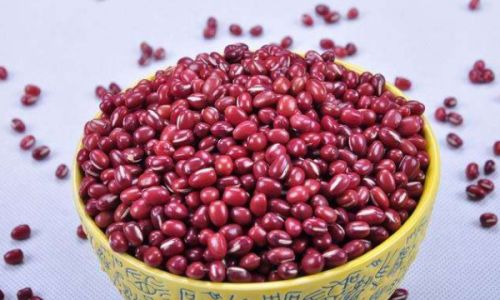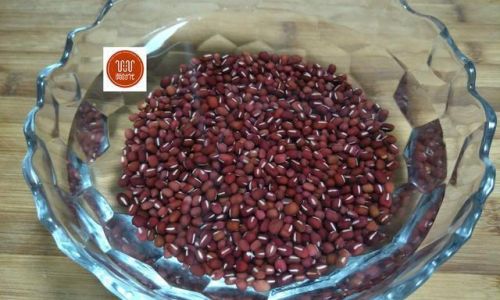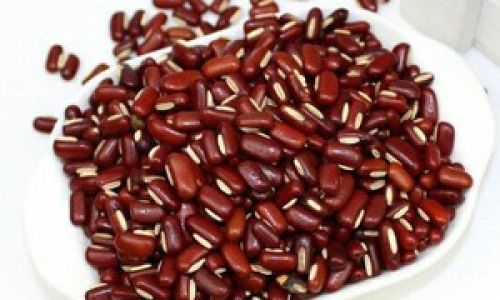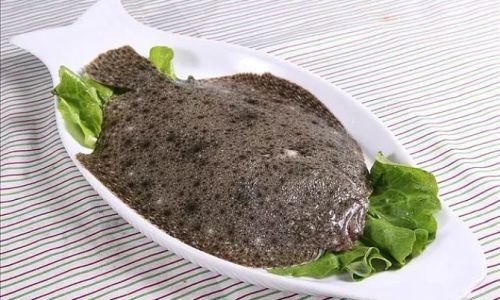Table of content
Introduction
Adzuki beans, small but mighty legumes native to East Asia, have been cherished for centuries for their delicate flavor, velvety texture, and remarkable nutritional profile. Often overlooked in Western kitchens, these ruby-red gems offer a world of culinary possibilities, from silky-smooth desserts to hearty savory dishes. Whether you’re a seasoned chef or a curious home cook, learning how to prepare adzuki beans can elevate your meals with their earthy sweetness and versatile appeal. This article delves into the secrets of making adzuki beans irresistibly delicious, exploring traditional techniques, innovative recipes, and expert tips to transform this humble ingredient into a star ingredient.
Chapter 1: Understanding Adzuki Beans
Before diving into recipes, it’s essential to grasp what makes adzuki beans unique. Scientifically known as Vigna angularis, these beans are small, oval-shaped, and boast a deep maroon hue. Their flavor is mildly nutty with a hint of sweetness, making them a perfect canvas for both sweet and savory preparations. Nutritionally, adzuki beans are powerhouses: rich in protein, fiber, iron, and antioxidants, they support digestion, heart health, and energy levels. Their low glycemic index also makes them ideal for managing blood sugar.

Chapter 2: Preparation Basics
1 Sorting and Rinsing
Like all dried beans, adzuki beans require thorough sorting to remove debris, stones, or damaged beans. Place them in a large bowl, fill with cold water, and swirl gently. Skim off any floaters or impurities, then drain and rinse under cool water.
2 Soaking: To Soak or Not to Soak?
While adzuki beans can be cooked without soaking, pre-soaking reduces cooking time and enhances digestibility. For a quick soak:
- Cover beans with 3 inches of water in a pot.
- Bring to a boil for 2 minutes, then remove from heat.
- Let stand for 1 hour, covered.
- Drain and rinse.
For overnight soaking:
- Submerge beans in water (3:1 ratio) and refrigerate for 6–8 hours.
3 Cooking Methods
- Stovetop Simmering: The most traditional method. Combine soaked beans with fresh water (or broth) in a pot, bring to a boil, then reduce heat to a gentle simmer. Cook until tender (30–45 minutes for soaked beans; 60–90 minutes unsoaked).
- Pressure Cooker: Cuts cooking time by half. Cook soaked beans for 8–10 minutes on high pressure; unsoaked for 15–20 minutes.
- Slow Cooker: Ideal for hands-off cooking. Cook on low for 6–8 hours or high for 3–4 hours.
Chapter 3: Sweet Masterpieces
1 Classic Red Bean Paste (Anko)
A cornerstone of Asian desserts, red bean paste is a silky, sweet filling used in pastries, mochi, and ice cream.
Ingredients:
- 2 cups cooked adzuki beans
- ½ cup sugar (adjust to taste)
- ¼ tsp salt
- 1 tbsp neutral oil (optional)
Instructions:

- Drain cooked beans, reserving ¼ cup cooking liquid.
- Blend beans and liquid until smooth (use a food processor or immersion blender).
- Transfer to a saucepan. Add sugar and salt; cook over low heat, stirring constantly, until thickened (10–15 minutes).
- For a glossy finish, stir in oil and cook 2–3 minutes more.
Uses: Fill dorayaki pancakes, daifuku mochi, or swirl into yogurt.
2 Adzuki Bean Soup with Coconut Milk
A comforting, dairy-free dessert soup.
Ingredients:
- 1 cup cooked adzuki beans
- 4 cups water or coconut water
- ½ cup coconut milk
- ⅓ cup palm sugar or brown sugar
- 1 pandan leaf (optional)
- Pinch of salt
Instructions:
- Simmer beans in water with pandan leaf for 15 minutes.
- Stir in sugar and salt until dissolved.
- Add coconut milk; heat through (do not boil).
- Serve warm or chilled, garnished with toasted coconut.
3 Red Bean Pancakes
Fluffy pancakes filled with sweet red bean paste.
Ingredients:
- 1 cup all-purpose flour
- 1 tbsp baking powder
- 2 tbsp sugar
- 1 egg
- 1 cup milk
- ½ cup red bean paste
Instructions:

- Whisk dry ingredients. In a separate bowl, beat egg and milk.
- Combine wet and dry mixtures until smooth.
- Heat a greased skillet. Pour ¼ cup batter per pancake.
- Spoon 1 tbsp red bean paste onto each pancake; cover with more batter.
- Cook until golden (2–3 minutes per side).
Chapter 4: Savory Sensations
1 Adzuki Bean and Kale Stew
A hearty, nutrient-packed stew.
Ingredients:
- 1 cup cooked adzuki beans
- 1 onion, diced
- 3 garlic cloves, minced
- 1 tbsp olive oil
- 4 cups vegetable broth
- 1 bunch kale, chopped
- 1 can diced tomatoes
- 1 tsp smoked paprika
- Salt and pepper to taste
Instructions:
- Sauté onion and garlic in oil until soft.
- Add paprika; stir 1 minute.
- Pour in broth, tomatoes, and beans. Simmer 15 minutes.
- Stir in kale; cook until wilted (5 minutes). Season and serve.
2 Adzuki Bean Burgers
Vegan-friendly patties with a meaty texture.
Ingredients:
- 1½ cups cooked adzuki beans
- ½ cup cooked quinoa
- ¼ cup breadcrumbs
- 1 tbsp flaxseed meal + 3 tbsp water (flax egg)
- 1 tsp cumin
- 1 tsp chili powder
- Salt and pepper
Instructions:
- Preheat oven to 375°F (190°C).
- Mash beans with a fork. Mix with quinoa, breadcrumbs, and spices.
- Add flax egg; form into patties.
- Bake 20 minutes, flipping halfway, or pan-fry until crisp.
Chapter 5: Modern Twists
1 Adzuki Bean Hummus
A protein-rich dip with an Asian twist.
Ingredients:

- 1 cup cooked adzuki beans
- 2 tbsp tahini
- 1 garlic clove
- 2 tbsp lemon juice
- 2 tbsp olive oil
- 1 tsp sesame oil
- Salt to taste
Instructions:
- Blend all ingredients until smooth.
- Adjust seasoning and serve with veggies or pita.
2 Adzuki Bean Energy Bites
No-bake snacks for on-the-go.
Ingredients:
- 1 cup cooked adzuki beans
- ½ cup oats
- ¼ cup almond butter
- 2 tbsp maple syrup
- 1 tsp vanilla
- ¼ cup chocolate chips
Instructions:
- Mash beans. Mix with remaining ingredients.
- Roll into 1-inch balls; refrigerate 30 minutes.
Chapter 6: Troubleshooting and Tips
- Beans won’t soften? They may be old. Add ¼ tsp baking soda to cooking water to speed softening.
- Bitter aftertaste? Rinse thoroughly after cooking to remove tannins.
- Enhance flavor: Simmer with kombu (seaweed) or add a pinch of cinnamon.
- Storage: Cooked beans last 5 days refrigerated or 3 months frozen.
Conclusion
Adzuki beans are a testament to the magic of simple, wholesome ingredients. Whether you’re crafting a decadent red bean dessert or a robust savory stew, these legumes adapt effortlessly to myriad flavors and techniques. By mastering preparation basics and experimenting with recipes, you’ll unlock their full potential—turning everyday meals into extraordinary culinary adventures. Soak, simmer, and savor the journey of transforming these tiny beans into dishes that delight the palate and nourish the soul.






0 comments